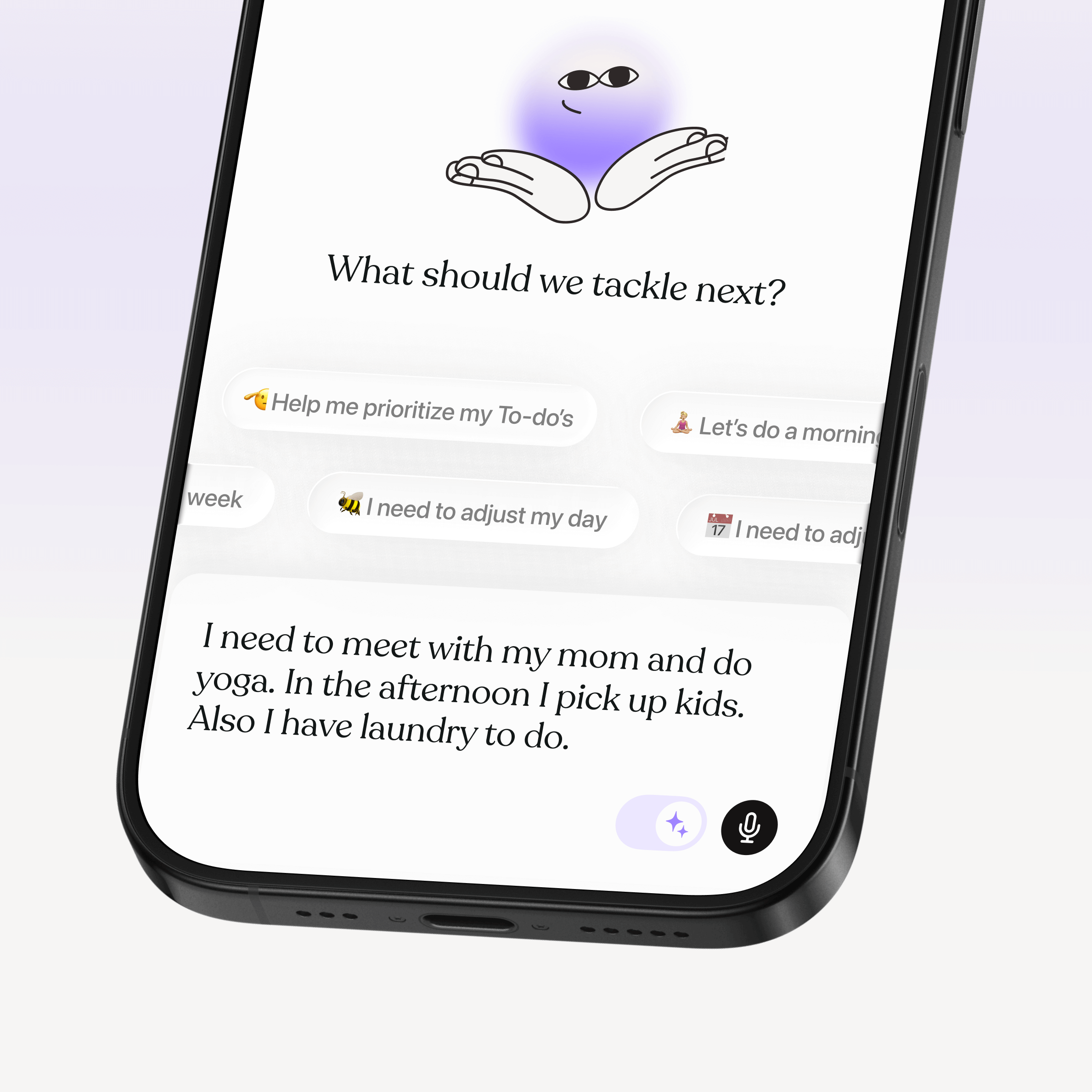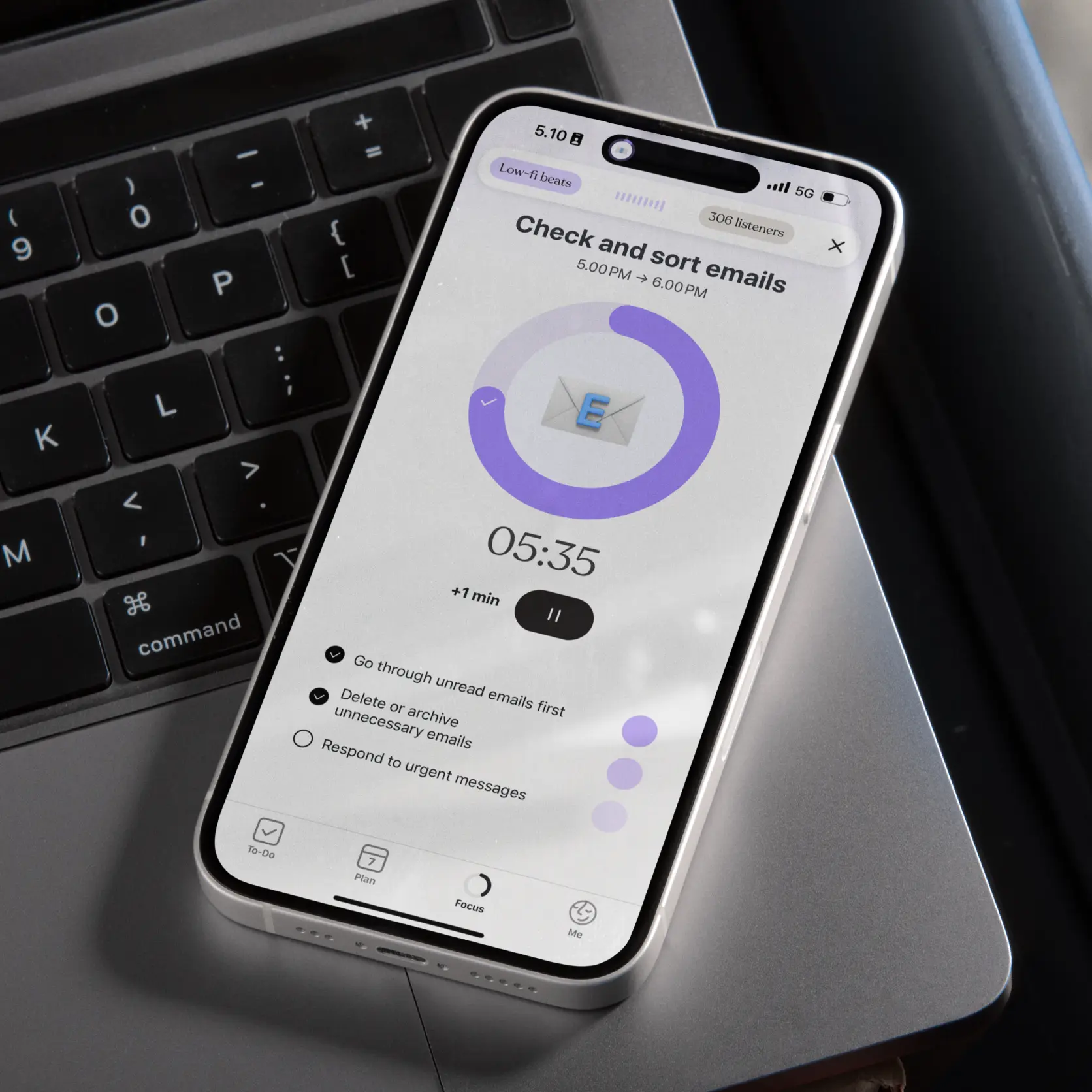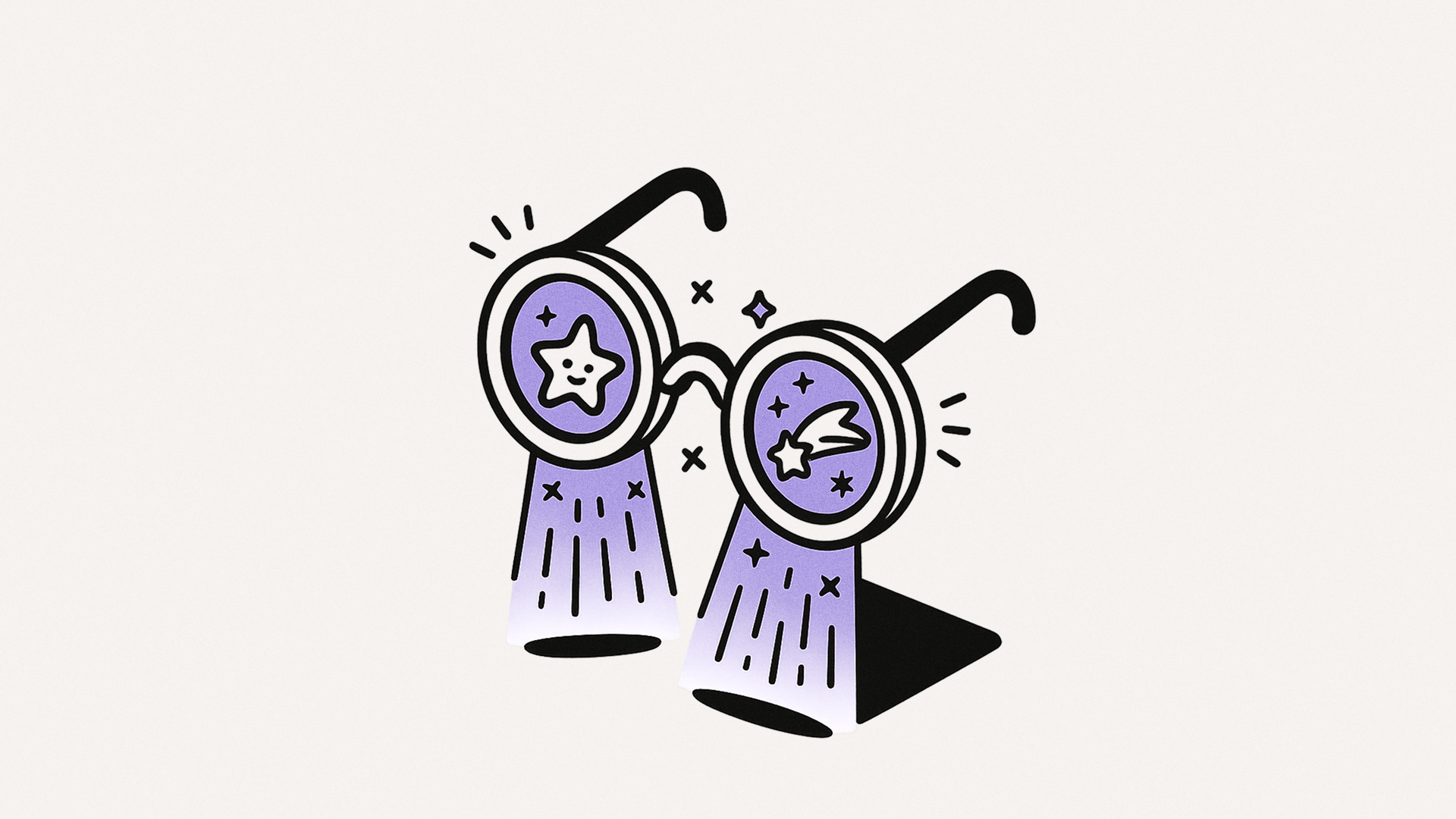Your alarm goes off, and instantly you're drowning in sensory chaos. Your phone screen blazes like a tiny sun while traffic outside creates this weird symphony that's somehow both overwhelmingly loud and muffled at the same time. Your sheets feel like sandpaper against your skin, and the thought of facing even more sensory input makes you want to hide under the covers until the world becomes less overwhelming.
Welcome to the daily reality of being an autistic adult in a world that pretends sensory processing is just a childhood phase that magically disappears at 18. Those sensory differences you had as a kid? They're still very much here, and now you're navigating office fluorescent lights that hum at frequencies that make your teeth ache, subway crowds that assault every sense simultaneously, and apartment neighbors who apparently collect jackhammers as a hobby.
Most routine advice treats sensory processing like a minor inconvenience to work around, but for autistic adults, it's literally your brain's operating system. When your routines work with your sensory patterns instead of against them, life has this beautiful flow where even challenging days feel manageable. When they don't, even the simplest tasks like brushing your teeth or choosing what to wear can feel monumentally difficult.
Understanding your sensory processing patterns
Every autistic adult moves through the world with a unique sensory fingerprint that shapes how they experience everything from morning coffee to evening wind-down routines. Your sensory system functions like an incredibly sophisticated data processing center, constantly taking in information through eight different channels: the obvious ones like sight, sound, touch, taste, and smell, plus the often-overlooked ones like movement awareness (vestibular), body position sense (proprioception), and internal body signals (interoception).
The fascinating thing about sensory processing is that it's not just about having "sensitive" or "insensitive" reactions. Your brain operates on complex thresholds that determine how quickly you notice sensory input and how actively you seek out or avoid different types of stimulation. Understanding these patterns becomes the foundation for creating routines that actually support your nervous system instead of constantly overwhelming it.
Sensory seekers live with high thresholds and an active drive for input, which means your brain essentially runs on a higher sensory fuel requirement than most people. You might find yourself constantly in motion, needing background music or noise to focus properly, gravitating toward intense flavors and textures, or feeling most calm and regulated when wrapped in heavy blankets or receiving firm pressure through hugs. Your nervous system craves robust sensory experiences to feel satisfied and balanced.
On the other side of the spectrum, sensory avoiders operate with low thresholds but high levels of active management around their sensory environment. You register sensory information incredibly quickly and intensely, which often means developing sophisticated strategies to control what reaches your nervous system. This might look like being particular about clothing textures to the point where you have three identical shirts, preferring quiet environments where you can hear yourself think, or feeling genuinely overwhelmed in busy spaces where too much sensory information hits you all at once.
Sensory sensors share those low thresholds but tend to be more passive in how they respond to overwhelming input. You notice absolutely everything happening around you, which can be both a superpower and an exhaustion source. You might get completely absorbed in observing details that others miss entirely, feel easily distracted by sensory information that others filter out automatically, or find yourself mentally cataloging every sound, texture, and visual element in your environment without meaning to.
Sensory bystanders operate with high thresholds but take a more passive approach to seeking the input they need. Your brain requires more intense sensory information to register what's happening around you, which can sometimes make you appear unaware of your surroundings or slow to respond to environmental changes. You might miss important sensory cues about hunger, temperature, or even physical safety, or find that you need particularly engaging sensory experiences to feel alert and present.
Morning routines that honor your sensory needs
Your morning routine serves as the sensory foundation for everything that follows, making it arguably the most important routine to get right from a nervous system perspective. The goal isn't just to accomplish a series of tasks, but to create a sensory experience that helps your brain feel regulated, prepared, and capable of handling whatever the day throws at you.
For sensory seekers, mornings often need to include enough robust input to satisfy your nervous system's higher requirements without tipping into overstimulation territory. This delicate balance might involve playing music with a strong beat while getting ready, incorporating movement like jumping jacks or dynamic stretching into your routine, choosing foods and drinks with satisfying temperature contrasts like hot coffee followed by cold orange juice, or using tools like vibrating toothbrushes that provide that extra sensory richness your brain craves. The key is frontloading your day with enough sensory satisfaction that you're not constantly seeking input later when you need to focus on other things.
Sensory avoiders often thrive with morning routines that feel gentle, predictable, and completely under their control. This might mean keeping your bedroom lights dim until you're fully awake and ready for brighter illumination, laying out clothes the night before so you don't have to make decisions while your brain is still coming online, using unscented or very lightly scented personal care products that won't assault your sensitive system, or creating a consistent sequence of activities that flows smoothly without jarring transitions or unexpected sensory surprises.
For sensory sensors, morning routines need to account for your tendency to notice and process every single detail in your environment. Success often comes from minimizing sensory complexity while maximizing predictability. This could involve using blackout curtains so you can control light exposure gradually, establishing a very consistent wake-up time that allows your body to develop reliable rhythms, keeping your bedroom and bathroom spaces visually calm and uncluttered, or using noise-canceling headphones if you live somewhere with unpredictable morning sounds that might derail your routine.
Sensory bystanders often benefit from morning routines that include more alerting activities designed to help your nervous system come fully online and engage with the day ahead. This might look like using bright lights or a sunrise alarm clock that gradually increases intensity, setting multiple alarms with different tones to ensure you actually register them, incorporating movement activities that provide proprioceptive input like stretching or brief exercise, or using visual planning tools like Tiimo's scheduling features to provide external structure when your internal awareness feels fuzzy or unreliable.
Essential morning sensory considerations:
- Light exposure timing and intensity: gradual versus immediate brightness, natural sunlight versus artificial lighting
- Sound environment management: complete silence, gentle background music, nature sounds, or familiar audio patterns
- Temperature and comfort transitions: warm showers, cool morning air, comfortable clothing layers that feel good all day
- Movement and body awareness activities: stretching, jumping, walking, or applying gentle pressure to help your body wake up
- Texture and touch preferences: soft fabrics, preferred materials, avoiding uncomfortable sensations that might derail your whole morning
Work and productivity routines through a sensory lens
Creating sustainable work routines as an autistic adult means recognizing that your sensory environment profoundly impacts your ability to focus, process complex information, and maintain energy throughout what can often be very long and demanding days. Traditional productivity advice completely ignores the reality that sensory overwhelm can make even simple tasks feel impossible, while the right sensory support can unlock focus and creativity you didn't know you had access to.
Your workspace becomes a critical component of your daily sensory routine, influencing everything from how quickly you can settle into productive flow states to how much energy you have left at the end of the day. This includes seemingly small details that actually make enormous differences: lighting that supports concentration without causing eye strain or headaches, sound levels that enhance rather than compete with your thinking processes, seating arrangements that provide the right amount of pressure and support for your particular body, visual organization systems that help your brain locate information efficiently without becoming overwhelmed by clutter, and easy access to sensory regulation tools that help you maintain balance throughout changing work demands.
Many autistic adults discover that their sensory needs shift significantly throughout the workday, requiring different strategies for different types of tasks or different energy levels. You might find that routine administrative work actually benefits from background stimulation like music or white noise, while complex problem-solving requires complete auditory silence. Your sensory preferences might change dramatically between morning high-energy periods and afternoon concentration challenges, or you might need different sensory support when working independently versus participating in meetings or collaborative projects.
Building intentional sensory breaks into your work routine can prevent the gradual accumulation of sensory stress that leads to overwhelm, shutdown, or complete exhaustion by day's end. These breaks don't need to be lengthy interruptions that derail your productivity, but they should be purposeful responses to what your nervous system is telling you it needs in the moment.
Workplace sensory accommodations:
- Use noise-canceling headphones, white noise apps, or carefully curated background sounds to create optimal auditory environments
- Adjust monitor brightness, position, and even screen color temperature to reduce visual strain and support sustained attention
- Keep fidget tools, stress balls, or other proprioceptive input devices easily accessible during meetings or phone calls
- Take brief but intentional sensory breaks: step outside for fresh air, wash hands with cold water, or do simple desk stretches
- Organize your workspace thoughtfully to minimize visual overwhelm while keeping essential items within easy reach
Evening wind down and sensory regulation
How you transition from the demands of your day into rest and recovery mode can make the difference between restorative sleep and lying awake feeling wired and overwhelmed despite being exhausted. Evening routines for autistic adults need to acknowledge that sensory input accumulates throughout the day, often in ways that aren't immediately obvious until you finally have a quiet moment to notice how overstimulated or depleted your nervous system has become.
This cumulative sensory effect means that your evening routine might need to focus primarily on helping your brain process and integrate all the sensory information from the day rather than simply following a predetermined schedule of activities. Your nervous system might need active calming input, complete sensory rest, or something in between depending on what kind of sensory day you've had.
Consider what specifically helps your brain shift from "day mode" to "rest mode" from a sensory perspective. This transition might involve gradually dimming lights throughout your living space starting an hour or more before bedtime, using heavy blankets, weighted lap pads, or other deep pressure tools that provide organizing sensory input, engaging in repetitive, soothing activities like listening to familiar music, audiobooks, or podcasts that don't require active mental engagement, or taking warm baths or showers that provide consistent, predictable sensory input while washing away the sensory residue of the day.
Some autistic adults discover they actually need sensory input in the evening to feel settled and ready for sleep, while others require significant sensory minimization to allow their overstimulated systems to calm down. Pay attention to whether you feel more regulated after gentle movement activities like restorative yoga or evening walks, or after completely quiet activities like reading, meditation, or simple breathing exercises.
Your sleep environment itself becomes a crucial component of sensory-informed evening routines, influencing not just whether you can fall asleep but whether you stay asleep and wake up feeling genuinely rested. Room temperature, bedding textures, ambient light and sound levels, air quality, and even the visual organization of your bedroom can significantly impact your nervous system's ability to settle into deep, restorative sleep cycles.
Flexible sensory planning with digital tools
Managing the complex interplay between sensory processing needs and daily routine requirements can feel overwhelming without some external organizational support. Digital planning tools designed with neurodivergent users in mind can provide crucial structure while maintaining the flexibility that autistic adults need to accommodate changing sensory needs and energy levels.
Visual planning applications like Tiimo work particularly well for sensory processing support because they allow you to see your entire day while building in considerations for sensory preparation, regulation breaks, and environmental changes. These tools can help you anticipate potential sensory challenges before they derail your routine, remind you of proven sensory strategies when you're too overwhelmed to remember them on your own, and track patterns in your sensory needs and energy levels over time.
When incorporating digital tools into your sensory routine planning, consider including gentle reminders for sensory regulation breaks before you actually need them, notes about potential sensory challenges in your schedule so you can prepare appropriately, built-in transition time between different sensory environments or demanding activities, and space to track which sensory strategies work best for different types of activities, times of day, or energy levels.
The goal is finding organizational tools that provide helpful external structure without creating additional sensory overwhelm or cognitive load. If visual planning apps with lots of colors and notifications feel too stimulating, simple text-based lists or calendar systems might work better for your particular nervous system. If you're a sensory seeker who benefits from engaging visual input, apps with customizable colors, sounds, and interactive elements might provide exactly the right amount of stimulation to keep you engaged with your routine planning.
Navigating sensory changes and challenges
Your sensory processing needs exist in constant relationship with factors like stress levels, physical health, hormonal fluctuations, seasonal changes, and major life transitions. Building genuine flexibility into your sensory routines means having strategies available for different types of days and different nervous system states, rather than expecting one approach to work consistently across all circumstances.
Some days your usual sensory strategies might feel overwhelming or completely wrong for reasons you can't immediately identify, while other days you might need significantly more or different input than your typical routine provides. Having a range of options available for different sensory states prevents you from feeling completely derailed when your go-to approaches don't work as expected.
This adaptive approach might involve creating "low sensory" versions of your essential routines for days when you're feeling particularly overwhelmed or sensitive, developing "high sensory" alternatives for days when you need more input to feel regulated and engaged, having multiple workspace configuration options depending on your daily sensory needs and the type of work you're doing, creating different evening routines for different energy levels and sensory states, and building recovery protocols for days when sensory overwhelm happens despite your best planning efforts.
Building sensory flexibility into your routines:
- Create "sensory emergency kits" for overwhelming days: sunglasses, noise-canceling headphones, comfort items, or calming scents
- Develop abbreviated versions of important routines for days when full routines feel like too much demand on your system
- Have backup plans ready for when familiar sensory environments become uncomfortable or unavailable
- Practice communicating your sensory needs clearly to others when necessary, whether at work, home, or in social situations
- Build intentional recovery time into your schedule after particularly challenging sensory experiences or demanding social interactions









